A new winter plan to curb emissions in northern China will not be enough to reverse last year’s sharp increase, official data shows, raising concerns that a weakening economy is eroding Beijing’s resolve to tackle pollution.
In an action plan that covers this month through March next year, China said 28 smog-prone northern cities, including Beijing, would have to curb emissions of lung-damaging small particles known as PM2.5 — particulate matter smaller than 2.5 micrometers — by an average of 4 percent from a year ago.
The particles are a major component of the smog that engulfs China’s northern regions over winter as people switch on coal-fired heating systems.
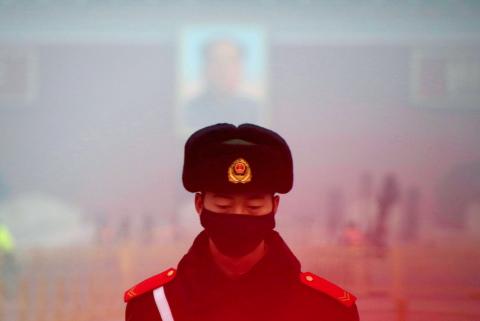
Photo: Reuters
However, the targeted decrease is 1.5 percentage points lower than an earlier draft, and would not be enough to reverse a 6.5 percent surge through the Beijing-Tianjin-Hebei region over the same period last year.
Last year’s jump came even though authorities targeted a cut of 35 percent, with efforts derailed by warmer weather and an increase in industrial activity after regions were given more flexibility to devise their own anti-smog measures.
This year’s lowered ambitions mean that as many as 15 of the 28 cities could have higher levels of smog than two years ago, even if they meet their targets, said Lauri Myllyvirta, a senior analyst with Greenpeace’s Global Air Pollution Unit.
An official from the Chinese Ministry of Ecology and Environment last week acknowledged that China’s pollution situation was still “serious,” with PM2.5 in the region up 1.95 percent in the first three quarters of the year.
In setting this year’s targets, China had to consider “maintaining stability” as well as “actual working conditions” in each location, the official said in a statement, adding that there were risks the goals would not be met.
Only four of the 28 cities — Beijing, Handan, Cangzhou and Jining — met targets last winter, official data showed.
PM2.5 levels in Anyang, China’s most polluted city last winter, soared 13.75 percent last year.
It is targeting a 6.5 percent cut this year.
Nearby Puyang has targeted a 65 percent fall this year, even though its average PM2.5 surged more than 20 percent a year ago.
The ministry has been at pains to say China’s “war on pollution” would not be affected by a slowing economy, with local governments no longer judged merely on crude economic growth.
Heavy industrial Hebei Province, home to eight of the 28 cities, yesterday promised to guarantee rules were enforced, adding that it would “strictly hold to account” any grassroots officials found responsible for worsening air quality.
The statement came as the region was once again plunged in smog amid soaring levels of PM2.5 concentrations.
However, there have already been signs Beijing will compromise, with Chinese Premier Li Keqiang (李克強) saying earlier this month that China remains dependent on coal, and would encourage clean and green mining.
China’s coal imports are also set to rise more than 10 percent this year, driven by loosened customs restrictions aimed at boosting the economy, analysts said.
“The lower air quality targets seem to reflect changed priorities,” Myllyvirta said. “The policymakers have let smokestack industries rebound, even if it means slowing progress on air quality.”
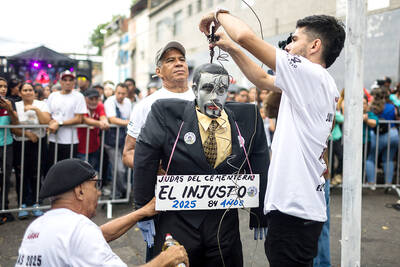
POLITICAL PRISONERS VS DEPORTEES: Venezuela’s prosecutor’s office slammed the call by El Salvador’s leader, accusing him of crimes against humanity Salvadoran President Nayib Bukele on Sunday proposed carrying out a prisoner swap with Venezuela, suggesting he would exchange Venezuelan deportees from the US his government has kept imprisoned for what he called “political prisoners” in Venezuela. In a post on X, directed at Venezuelan President Nicolas Maduro, Bukele listed off a number of family members of high-level opposition figures in Venezuela, journalists and activists detained during the South American government’s electoral crackdown last year. “The only reason they are imprisoned is for having opposed you and your electoral fraud,” he wrote to Maduro. “However, I want to propose a humanitarian agreement that
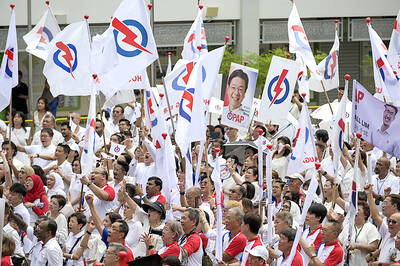
ECONOMIC WORRIES: The ruling PAP faces voters amid concerns that the city-state faces the possibility of a recession and job losses amid Washington’s tariffs Singapore yesterday finalized contestants for its general election on Saturday next week, with the ruling People’s Action Party (PAP) fielding 32 new candidates in the biggest refresh of the party that has ruled the city-state since independence in 1965. The move follows a pledge by Singaporean Prime Minister Lawrence Wong (黃循財), who took office last year and assumed the PAP leadership, to “bring in new blood, new ideas and new energy” to steer the country of 6 million people. His latest shake-up beats that of predecessors Lee Hsien Loong (李顯龍) and Goh Chok Tong (吳作棟), who replaced 24 and 11 politicians respectively
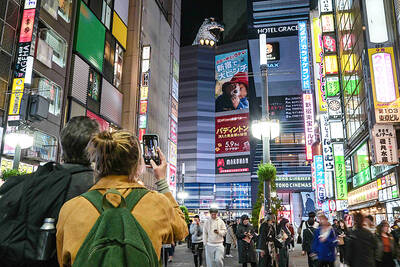
Young women standing idly around a park in Tokyo’s west suggest that a giant statue of Godzilla is not the only attraction for a record number of foreign tourists. Their faces lit by the cold glow of their phones, the women lining Okubo Park are evidence that sex tourism has developed as a dark flipside to the bustling Kabukicho nightlife district. Increasing numbers of foreign men are flocking to the area after seeing videos on social media. One of the women said that the area near Kabukicho, where Godzilla rumbles and belches smoke atop a cinema, has become a “real
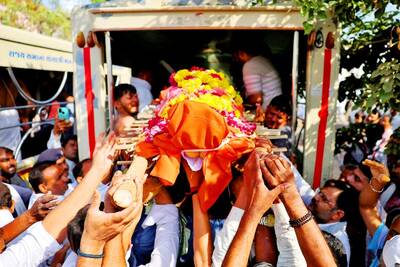
‘WATER WARFARE’: A Pakistani official called India’s suspension of a 65-year-old treaty on the sharing of waters from the Indus River ‘a cowardly, illegal move’ Pakistan yesterday canceled visas for Indian nationals, closed its airspace for all Indian-owned or operated airlines, and suspended all trade with India, including to and from any third country. The retaliatory measures follow India’s decision to suspend visas for Pakistani nationals in the aftermath of a deadly attack by shooters in Kashmir that killed 26 people, mostly tourists. The rare attack on civilians shocked and outraged India and prompted calls for action against their country’s archenemy, Pakistan. New Delhi did not publicly produce evidence connecting the attack to its neighbor, but said it had “cross-border” links to Pakistan. Pakistan denied any connection to